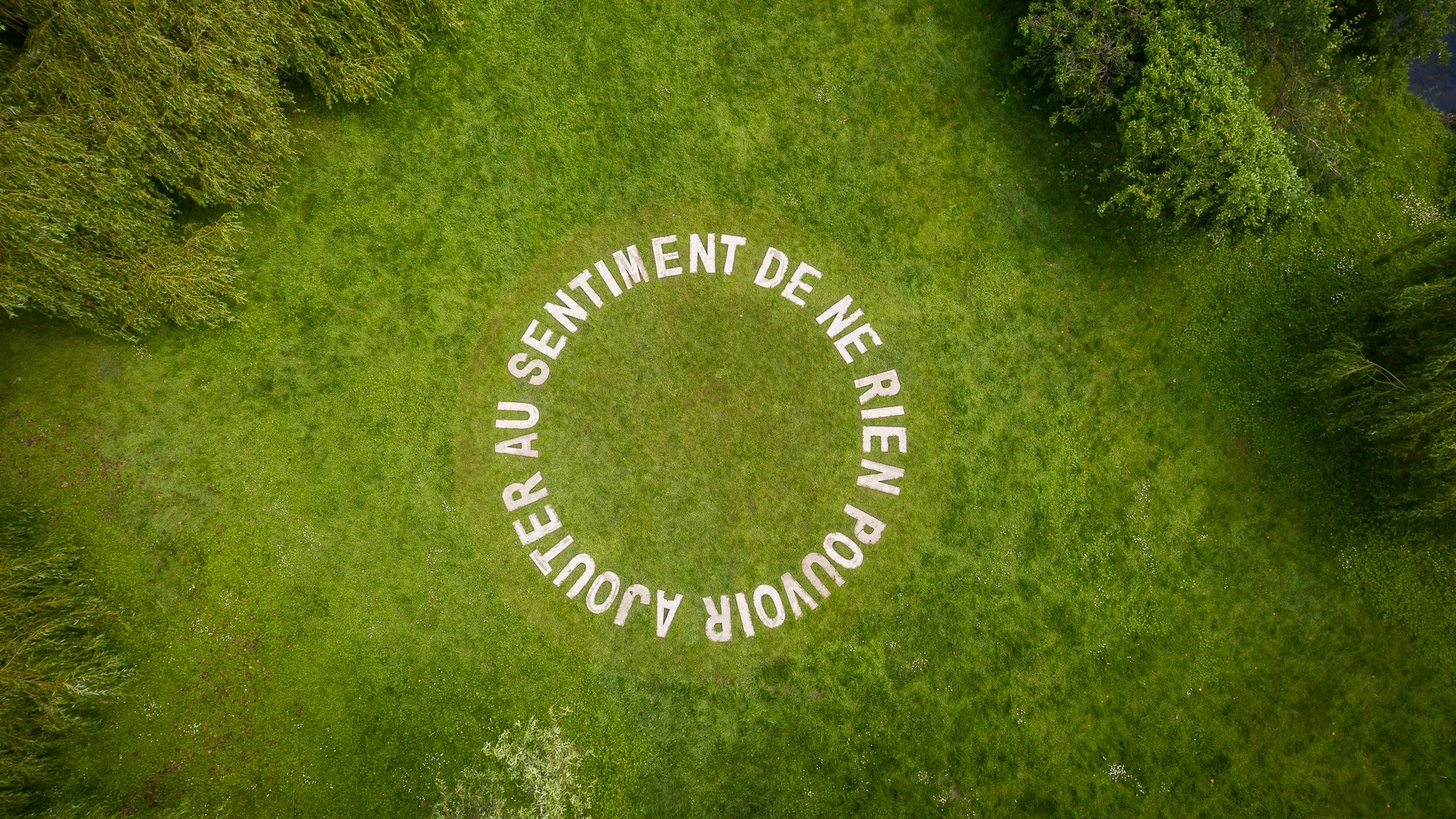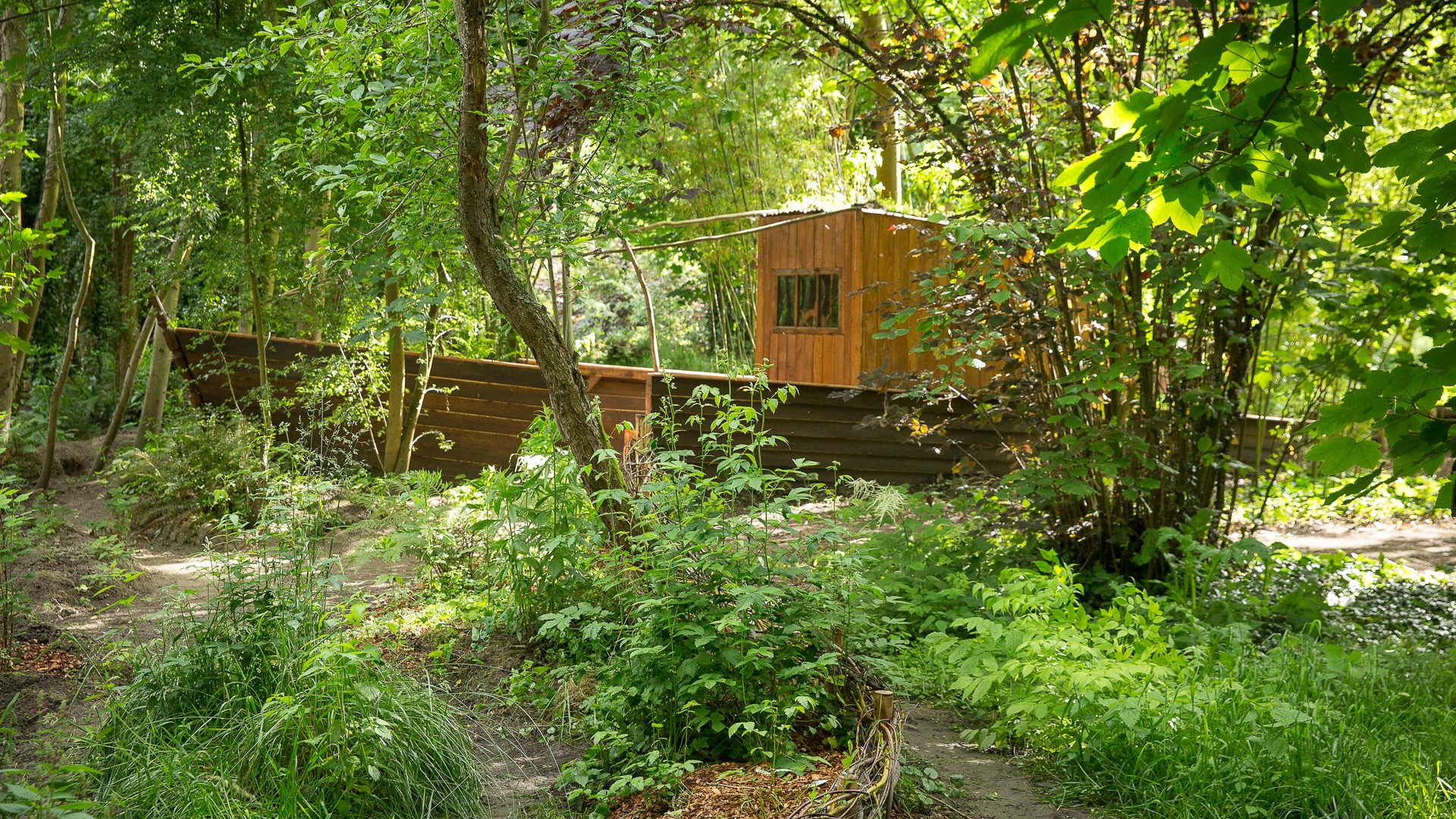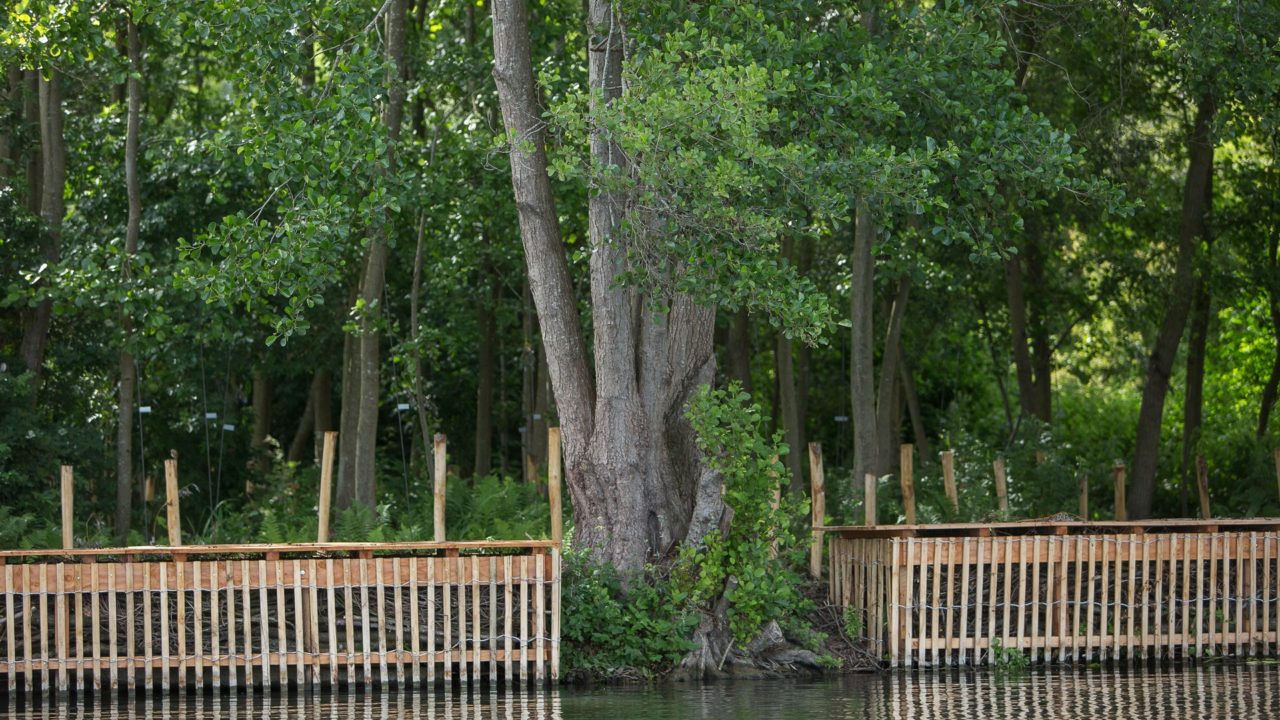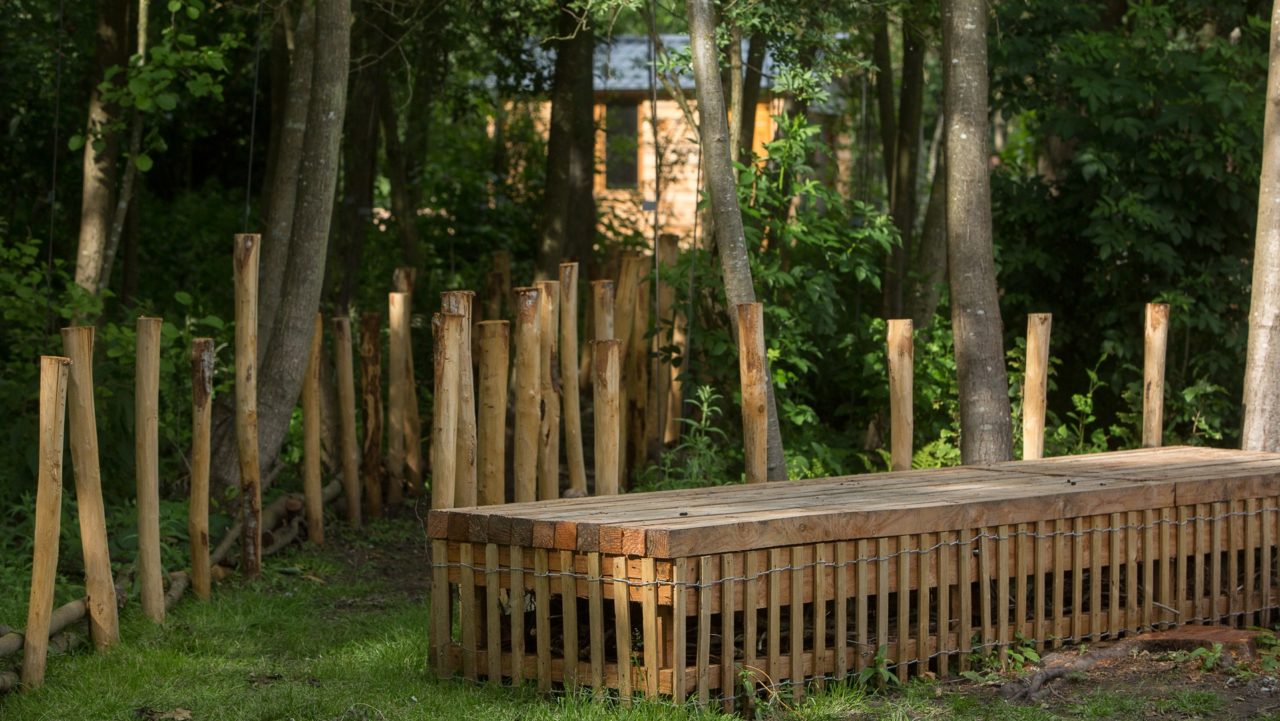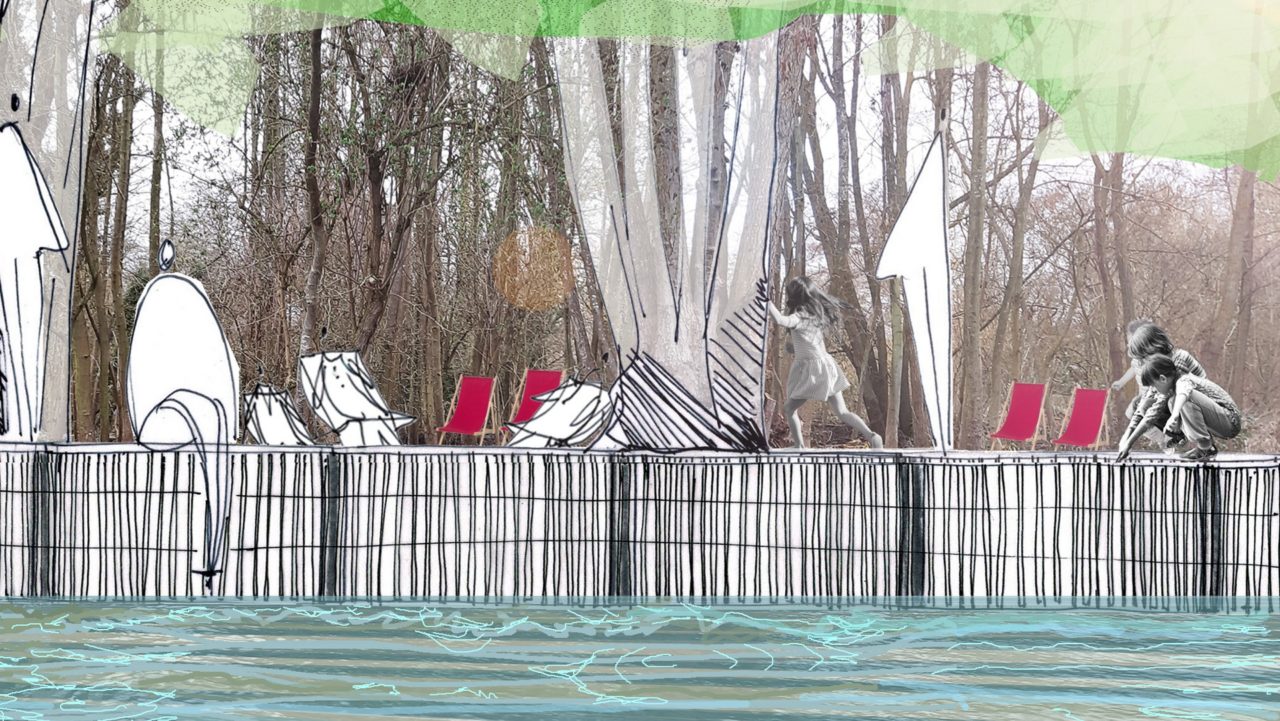Since the inception of the Festivals, erosion of the banks has threatened the Hortillonnages and this has prompted many exhibits. The project Le Jardin brise-lames, designed by 2 workshops, Piano Landscape and Atelier L., is based on the principle of cleft paling, which is a fence made from strips of wood that was traditionally used to maintain sand dunes. In this instance, it is used not as part of a beach, but around an island where the banks are deteriorating. Positioned vertically, the cleft paling surrounds the degraded river bank: in doing so, it makes it possible to store bundles of wood as well as larger pieces of wood behind it and to maintain the garden that is in contact with the bank. As it decomposes, the vegetable matter recreates a substrate that consolidates the eroded riverbank. Above the surface, a bench which acts as a breakwater to calm the waves generated by the passage of boats, protects the island and provides a seat and an observation post to study the surrounding islets. Inside the plot, there is a teaching garden where the natural flora of the marsh grows freely, each plant is labelled so that it can be identified.
The artist
Collectif Piano Paysage : Gwenaëlle Charrier et Pierre David Collectif Atelier L. Paysage : Florine Lacroix et David Belamy


